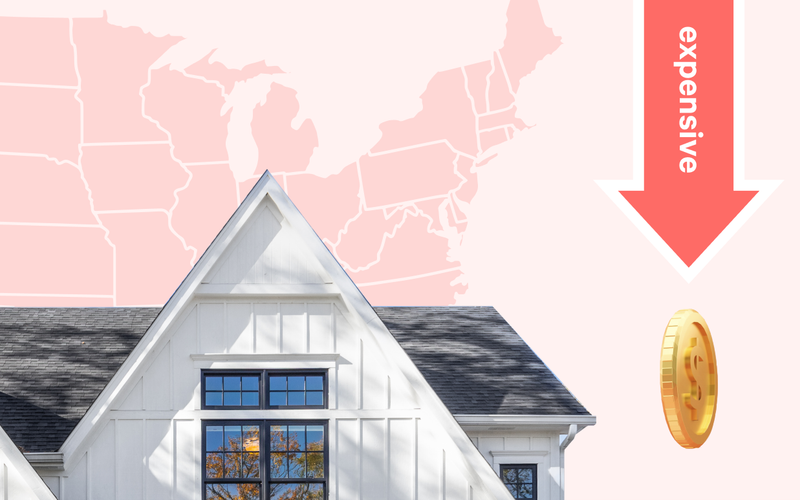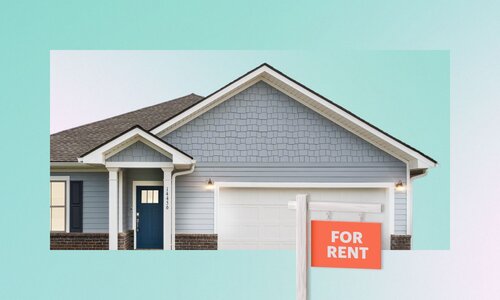If you’re looking to move or buy an investment property in a hot market and are undecided about where to start, you’ve probably come across lists of the states with the lowest cost of living. But where is the housing market booming out of control?
According to the Zillow Home Values Index, or ZHVI, these are the ten most expensive states to buy a house in. Remember that these numbers aren’t median costs across the board, nor do they consider expenses like property taxes or home insurance. Instead, the ZHVI analyzes the typical cost of homes right now based on the company’s “Zestimates” for individual homes and month-to-month changes in those numbers as the market fluctuates.
Also note that the Zillow index lists Washington, D.C., as the third-most expensive place to buy a home, at a typical cost of $703,476, but since it’s not a state, we’re excluding it from this list.
The most expensive states
Without further ado, here are the 10 most expensive states of 2022:
Hawaii
ZHVI: $918,075
In many western states, housing costs are mitigated by simply building more, or building taller, to increase inventory. Not so in Hawaii, which has policies to limit the amount of land available for new builds. So when prime shorefront real estate is gone, it’s gone—and that limited space for new construction makes existing home prices rank well above the national average. The state’s median household income is about $82,200 per year, according to the Federal Reserve Bank of St. Louis.
California
ZHVI: $775,876
Of course, you’ve seen statistics about the absurdity of rent in San Francisco. Even well-paid tech employees sometimes share homes with six or seven others to make housing prices tip toward affordability. According to Zillow, the median rent per unit in SF is $3,700 per month. Statewide, the median household income is over $81,587, well above the national median of $70,784. Still, there are plenty of more affordable markets in California, especially in inland cities and towns away from coastal hubs like San Diego, Los Angeles, and the Bay Area.
Washington (State)
ZHVI: $616,259
According to the Seattle Times, Washington’s period of explosive growth has slowed, but its housing market is still one of the strongest in the nation. Seattle’s tech scene has solidified recently as major brands like Amazon have added a wealth of high-income careers. Like California, Washington’s median household income is high—about $87,650 per year.
Massachusetts
ZHVI: $587,998
Massachusetts is home to the largest city in New England (Boston), an Ivy League university (Harvard), and the most-educated population in the nation—52% of the state’s residents have a college degree. That makes for a high median household income—$86,566—and hefty home prices. According to the Financial Times, luxury homes in the Boston area sold for an average of $2.2 million as of this past June. The market seems to stabilize after a significant growth boom fueled by the pandemic housing “buying spree,” but prices remain among the highest in the U.S.
Colorado
ZHVI: $580,275
Colorado has seen major, sustained economic growth over the last few years, and it’s not only because it’s home to the first legal American marijuana industry. In recent years, many major tech companies, including Google, have set up shops in Colorado towns like Boulder, which offer employees proximity to outdoor recreation and high quality of life. Like other big cities around the country, Denver’s population growth stagnated during the pandemic as people left for more spacious areas. But the state as a whole saw a net growth, like much of the Rocky Mountain West, and interest in moving to outdoorsy states with easy access to ski resorts, hiking trails, and rivers for rafting and fly fishing only seems to be increasing.
Utah
ZHVI: $564,248
Like Colorado, Utah has experienced explosive growth in the last few decades as more people have seen the value of living close to nature. While prices have started to come down in the previous few months, Salt Lake City’s median home price saw a nearly 17% jump in the last year, and they doubled in less than five years from $308,000 in 2017 to $620,000 in May of this year. Utah is home to some of the country’s best-known National Parks, including Arches, Canyonlands, Zion, and Bryce. As such, it has a booming tourism industry that sustains the state economy and home values in tourist-friendly towns where vacation rentals are a wise investment.
Oregon
ZHVI: $518,377
Similar to policies in place in Hawaii, Oregon has Urban Growth Boundaries in place that limit how much suburban sprawl can spread around the state’s cities. So, with remote workers flocking away from ultra-expensive areas but maintaining their high incomes, Oregon is one of many states seeing a jump in the average cost of a home thanks in part to heavy demand from people moving in from out of state. Oregon’s median household income is about $81,850. The state has quite progressive policies around wages–residents enjoy one of the highest minimum wages in the country, at $13.50 per hour statewide.
New Jersey
ZHVI: $471,472
It’s no surprise that New Jersey ranks among the highest housing markets, as its proximity to New York City means there’s a lot of commuting across state borders. In 2019, 400,000 people crossed the Hudson River every day to commute to New York, according to NBC New York, and that number is growing despite pandemic-era remote work. By 2030, the figure is expected to jump a further 10 percent. New Jersey is extremely densely populated, and its median household income is one of the highest in the nation, at about $88,600 per year.
Idaho
ZHVI: $467,883
Idaho saw a major housing boom during the pandemic, to the point where Boise was regularly listed as the nation’s single most overvalued housing market. Its prices have since started to fall, but Idaho remains one of the most expensive markets in the country. Idaho ranks about dead average for cost of living across the board compared to other states, yet has a higher-than-average median household income of about $77,000 per year.
Nevada
ZHVI: $462,259
Thanks partly to neighboring Californians moving across the state line with “wads of cash,” the Las Vegas housing market was among those considered to be overvalued during the pandemic price boom of the last few years. But Vegas wasn’t the only market affected—Reno, just 40 miles north of Lake Tahoe and its ski resorts, saw its median home price jump to about $600,000. But at about $64,340, the state’s median household income ranks lower than the national median—the only one on this list for which that’s the case.
What are the cheapest states?
Good question. We’ve rounded them up here, so go and have a look (spoiler alert: West Virginia’s currently got the most affordable housing market, and Mississippi, Iowa, Oklahoma, and Kansas are on the list, too). But remember that a state’s ranking on this list doesn’t necessarily mean it is or isn’t a good place to buy. The cost of living index, price of and access to healthcare, state income tax, and transportation costs vary from county to county and town to town and impact how a home will appreciate over time far more than a state’s overall typical home cost.
Likewise, states that didn’t rank on our list of most or least affordable places—like Indiana, Georgia, Missouri, Michigan, Connecticut, New York, and Texas—can still be good buys, too.
Arrived makes it easy to invest in rental homes
You don’t have to buy a whole house to break into the housing market. Arrived lets investors get in on the ground floor of a home purchase by crowdfunding strategic investments in trending markets and taking care of all the logistics a typical homeowner would have to handle. So you don’t have to.
You can get started with an investment of virtually any size. Check out the inventory of available homes now!







